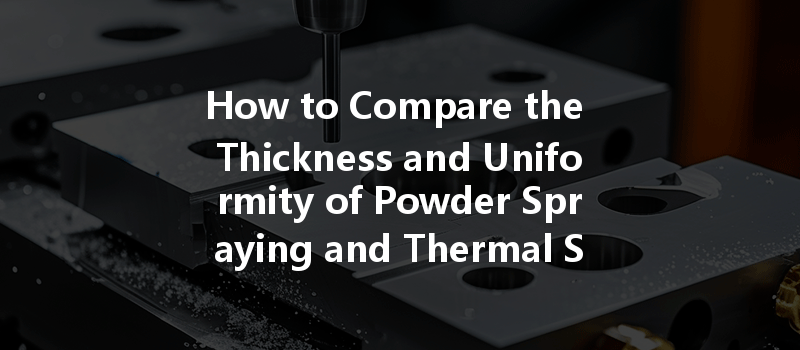Did you know that the choice of surface coating can significantly impact the durability and performance of CNC machined parts? In today’s competitive manufacturing landscape, understanding the nuances between various surface coating techniques is essential. Among these, powder spraying and thermal spraying are two prevalent methods that have garnered attention for their ability to enhance surface properties. This blog aims to dissect these techniques, highlighting how to compare the thickness and uniformity of coatings applied through powder spraying and thermal spraying in CNC machining environments.
to Surface Coatings in CNC Machining
Surface coatings serve multiple purposes in manufacturing, from enhancing aesthetic appeal to improving resistance against wear, corrosion, and thermal degradation. In CNC machining, where precision and quality are paramount, the right coating can make a significant difference. The selection of a specific coating method can register a substantial impact on final product quality. Understanding how to assess the thickness and uniformity of these coatings is therefore critical.
The Why Behind Coating Selection: Powder vs. Thermal Spraying
Understanding the specific applications, benefits, and limitations of these methods sets the foundation for comparing them.
Comparative Analysis of Coating Techniques
Measuring coating thickness is a primary concern when evaluating both powder and thermal spraying technologies. The desired thickness may vary based on application, with tolerances often ranging from a few microns to several millimeters.
Measurement Techniques
Comparative Analysis of Coating Thickness
In CNC machining, the most optimal method of achieving desirable thickness often differs based on the chosen coating technique:
Understanding the implications of coating thickness helps manufacturers decide appropriately based on end-use requirements.

Uniformity signifies the consistency of coating distribution across the surface area. In CNC machining applications, non-uniform coatings can result in localized weaknesses, adversely affecting performance.
Evaluation Techniques
Comparison of Uniformity in Coating Techniques
The final purpose of coating techniques revolves around enhancing the part’s operational lifespan performance. Therefore, other factors such as wear resistance and thermal stability gain significance.
Performance Metrics by Coating Type
—
: The Importance of Understanding Coating Techniques
Understanding the technical differences between powder spraying and thermal spraying in terms of thickness and uniformity is essential for optimizing CNC machining processes. As industries continue to evolve, so too will the demands for high-quality, durable parts that meet strict operational standards.
CNC machining professionals must be well-versed in evaluating and selecting the right surface coating techniques to enhance product performance and longevity. In this regard, comparing these two techniques, along with their methodologies, measurements, and impacts, becomes increasingly crucial.
The insights shared in this blog illustrate not just the importance of coating choice but underscore the necessity of rigorous assessment methods. As manufacturing continues to navigate complexity, being equipped with this knowledge can make a significant difference in quality assurance and operational success. Readers are now encouraged to think critically about their coating choices and invest in deeper understanding, leading to better manufacturing outcomes and sustained competitive advantages in the dynamic landscape of CNC machining.
Related Posts
- What are the best strategies to ensure accuracy and fit of threaded holes in CNC machining?
- How to Optimize Workpiece Clamping and Positioning in CNC Machining for Enhanced Accuracy?
- What is the difference between the processing methods of 347 stainless steel and 316L stainless steel in CNC machining?






